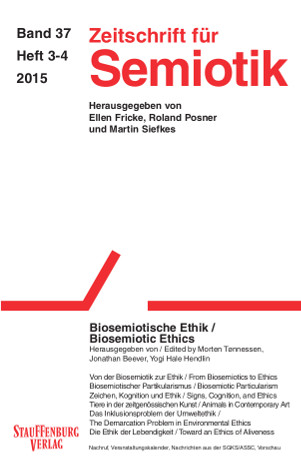Kommunikation, Sprache und das Inklusionsproblem der Umweltethik
DOI:
https://doi.org/10.14464/zsem.v37i3-4.382Keywords:
environmental ethics, biosemiotic ethics, demarcation problem, moral standing, capability to communicate, animal communication, speech act, discourse, sentience, philosophy, moral philosophy, ethicsAbstract
This article contributes to solving the demarcation problem in environmental ethics. From within a discourse-ethical framework a criterion for the “capability to communicate” is proposed. After presenting some paradigm examples of communication within the non-human biotic world, four layers of communication are distinguished. Two layers occur in the non-human world, two remain specific to humans (“speaking a language by using speech acts” and “discourse”). It is argued that vocal and vocal-gesture communication is of moral relevance. Finally, three criteria for moral considerability are compared: “sentience”, “interests”, and “capability to communicate”. This comparison points to parallels and implies a proposal of how to deal with the demarcation problem.
Downloads
Published
Issue
Section
License
Copyright (c) 2018 Konrad Ott

This work is licensed under a Creative Commons Attribution 4.0 International License.
Copyright for articles published in this journal is retained by the authors. The content is published under a Creative Commons Licence Attribution 4.0 International (CC BY 4.0). This permits use, distribution, and reproduction in any medium, provided the original work is properly cited, and is otherwise in compliance with the licence.


